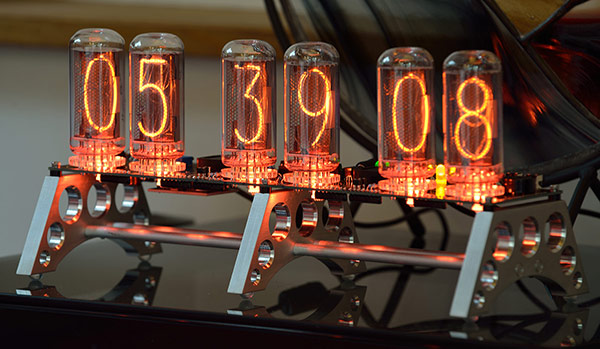
PVE Spectrum 18 clock with IN-18 tubes on a Bad Nixie trestle stand
Nixie Clocks

PVE Spectrum 18 clock with IN-18 tubes on a Bad Nixie trestle stand
Ah the nixie tube, a pretty and oft misunderstood thing. Not to be confused with the thermionic valve (tubes to our American cousins), the nixie consists of a wire mesh anode and multiple cathodes. Most commonly shaped as numbers, but also seen as other characters and symbols. Like the thermionic valve, they live inside a glass tube, but in this instance it's filled with gas. Usually a mixture mostly consisting of neon, and rather than relying on thermionic emission of electrons, it actually works more like a neon lamp, and is therefore referred to as a cold cathode tube.
They were made mainly in the 70's and used as displays on industrial and scientific equipment. They were particularly popular in the USSR and a great many of the tubes originate there. They are not without their foibles however.

PVE Spectrum 18 clock with IN-18 tubes in a PVE stainless steel case
When you're talking about old tech, there are always issues. A common one with some of the larger tubes (most often the Russian IN-18) is cathode poisoning. This occurs when contamination of the element, probably introduced at manufacture by poor handling of the cathodes, causes parts of characters to go dark or even go out. This can be cured in a moderately brutal fashion, and that's what the piece of equipment I've built below is for.
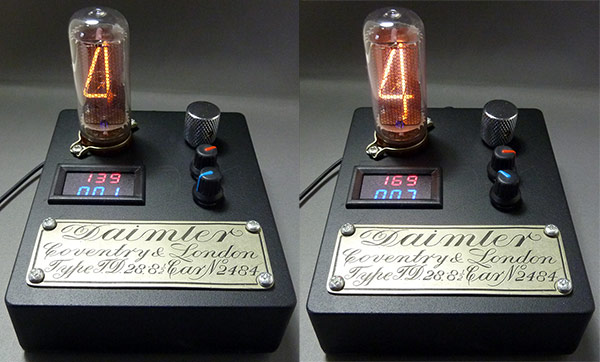
I shall call it the Burn-O-Tron!
One way of restoring the characters is to give them a long burn at a higher voltage and current. IN-18's are rated to 200V and 8mA. The voltage is adjusted in the normal manner. The current draw is adjusted by having a 100R resistor and a 2K pot in line as a variable current limiting resistor. Running the character at a higher voltage for a few hours can burn off the contaminants and restore the character.
It can take a while, but then with the cost of IN-18's now getting to the UKP50+ level, me having 5 cathode poisoned tubes, and the burner costing not much more than one of them to create, it's worth the effort. Though not my prettiest build by a long, long way. It had a troubled construction... The Daimler badge is because it had a gap with nothing in it, and I had a badge that fit.
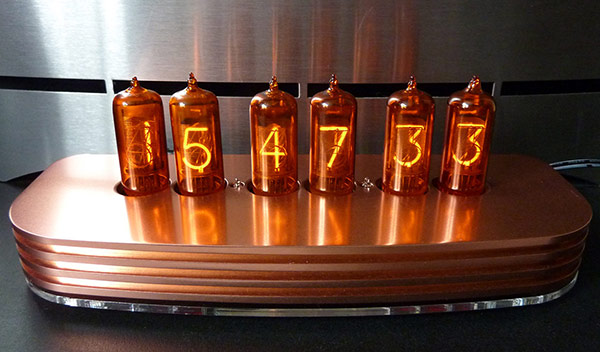
PVE QTC with Telefunken ZM1210 tubes in a PVE finned anodised 'copper' case
Finally throughout this article are some of the clocks I've built. Mainly for myself and for Nick7 (a fellow nixie obsessive). They're all from kits sourced from PV Electronics in the UK. Again, this is old tech and to re-iterate, some of them have foibles. Older clocks can have a very high frequency whine, most operate a matrixed style drive that can sometimes have odd side effects with certain tubes like other non-active characters glowing after they've been on a long time.
Indeed the only clock I've built to date with no issues is his direct drive Spectrum 18 clock running with a PIR module. No noise, no weirdness. Indeed the only problem comes from the IN-18 tubes and manufacturing defects. I'd have also listed the QTC clock with it, certainly run with IN-8-2 tubes. But using the utterly staggeringly beautiful ZM1210 with it, brings some odd side effects sadly. But that one is also silent and mostly behaves.
UPDATE: After talking to Pete at PVE, two transistors needed replacing. I've no idea why they'd have gone bad, and he was vague about the whole thing. But since they've been swapped for new ones, that clock has been tickety boo. Not knowing why irks me...
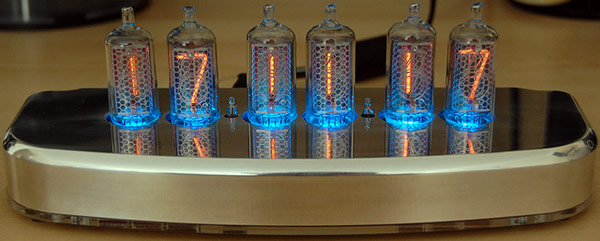
PVE QTC with IN-8-2 tubes in a PVE polished aluminium case
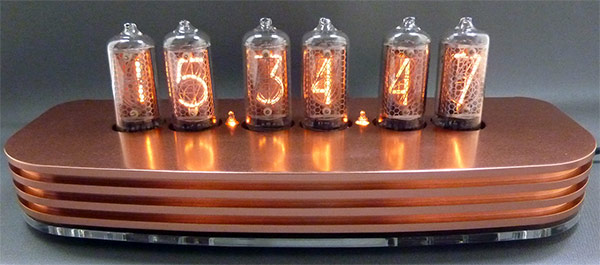
PVE QTC with IN-8-2 tubes in a PVE finned anodised 'copper' case
[ back ]